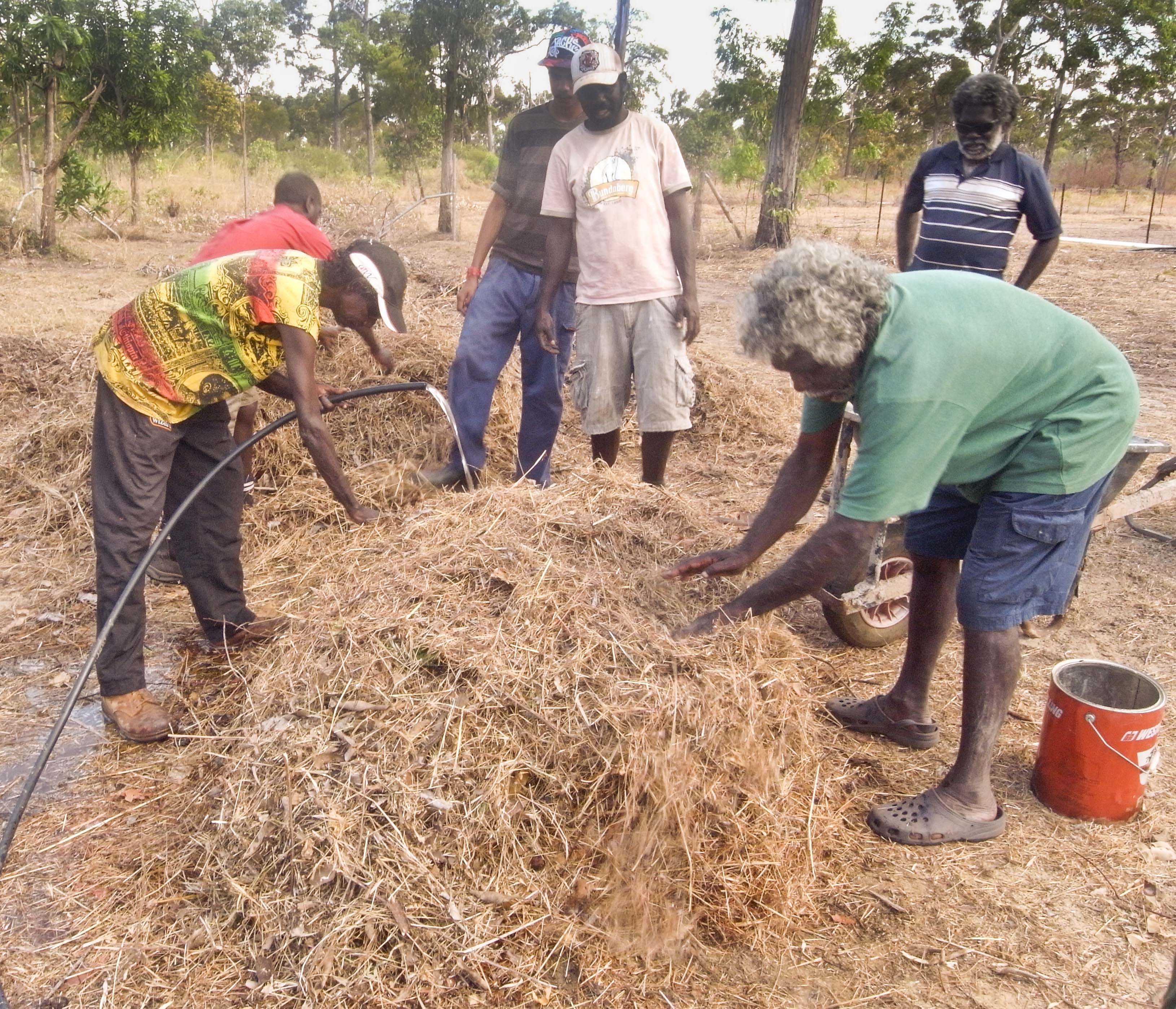Today's Economy
The following article has been reproduced from the ‘Why Warriors’ blog and is the second part in a series of articles. Manna Matters will run the full series over coming editions.
In the previous article I discussed some of the historical influences on the economy in the remote Indigenous communities of Arnhem Land in the Northern Territory. Briefly, it shows that Indigenous people have been moved from a position of traditional economic independence to a situation where almost all income into their communities comes from the dominant culture Government, either as social security payments, or via grants and contracts to various local organisations.
As a result, the economy of these communities are largely artificial. Even where private businesses exist, ultimately they are dependent on the influx of taxation revenue from the Australian Government. For example, the local store in Galiwin’ku is a commercially viable and profitable enterprise that successfully employs local Yolŋu staff with wages at and above the industry standard. But ultimately, even businesses like this rely on customers whose income is almost entirely from Centrelink payments or from jobs in Government services, such as the clinic, Centrelink and the Shire council etc. The other significant non-Government employers in many Arnhem Land communities are the Home Land Resource Centres. These centres run a variety of commercial enterprises, but again, rely on local customers’ welfare payments, or have contracts which come from Government grants and contracts, such as housing and infrastructure projects. Seriously, if you lived in an Indigenous community your whole life, you should be forgiven for thinking that the whole country’s economy is based on Government handouts – this is the illusionary force that surrounds you as one continues to work in the “Indigenous Industry.” If the Government suddenly stopped supporting Indigenous communities there would be a very limited monetary economy here.
The biggest source of income outside of the Government is land use royalties, for things such as mining, grazing and pearling, but like welfare payments these do not provide any meaningful employment for locals and are not managed by the people themselves. These monies are controlled by the Land councils which in the NT, unlike the rest of Australia, are not locally controlled organisations, but statutory organisations that manage income from a huge expanse of lands on behalf of the true land owners. The Land councils struggle to determine who should control these monies according to the traditional Indigenous systems, and so tend to divide the profits amongst everyone who puts up a fight for it. Due to the lack of connection between the payments and the land the monies come from, and the lack of control traditional owners have, these royalties become another form of “free” money.
As the most readily available sources of income are perceived as free money, many people have become trapped by dependency on such devalued income. Their sense of motivation and power, and motivation to labour, dwindles as they start to believe that accessing “free” money is the way one must survive today. However, do not think that people are all hopelessly dependent or just “bludging” – there are very limited jobs to go around, so people are forced to make do however they can. Welfare payments become the only option as life in the new world being constructed around them in these “growth towns” is more and more dependent on access to money.
|
Workers making compost in a private family run market garden, an enterprise supported by the AHED Project |
There are only a few areas of private enterprise that add real value to the local economy and also provide a fulfilling vocation. These are mostly from the arts, crafts trade and knowledge industries, such as teaching, Indigenous knowledge, and research. There is almost no primary production, with locally controlled market gardens just starting to become real possibilities (although hampered by the difficulties of finding a motivated workforce, and constant attempts by the dominant culture to force community gardens on people). This stands in stark contrast to the mission history when all the missions had thriving gardens. A sustainable tourist industry is also only just starting to spread it wings.
What does this mean in monetary terms for the average household? The average income in the community is roughly equivalent to a social security payment of $300 – $480 a fortnight. Pensioners and people receiving top-ups on Community Development Employment Project payments (which is now a form of Newstart Centrelink payment and is being phased out) receive up to about $600 per fortnight in total. This means on average, people are earning about one fifth to one quarter of the average Australian income ($60,000pa as at August 2010). Some families receive income in addition to this through royalty payments that are usually widely distributed. This seems to be sufficient for most families to manage rent and buy food and basic items, when they are managing their budget well. Those who manage their money well have enough; but those that do not struggle, and there are those who, for various reasons, have difficulty accessing income, including Centrelink payments, who are truly poor.
We need to remember that the economy is not just about the money; the real ecomony involves the transfer and transformation of all valuables. These include all forms of sweat (hard work and labour, including parenting), using land resources and primary production (growing things). Many Yolŋu people contribute to the local economy through land management and harvesting traditional foods. For a few young men this is almost a full-time job. While money is rarely exchanged for Yolŋu food items, the food is exchanged through reciprocal generosity and kin relationships. Yolŋu native food items are highly valued and are important contributions to the families’ real income and nutrition. Significant local elders in Arnhem Land communities also contribute huge amounts of time to governance, dispute resolution and generally maintaining social order through Indigenous systems. This work is mostly devoted to the Indigenous domain – that part of Aboriginal communities that non-Indigenous personnel rarely participate in. In addition to this some of them also participate, with difficulty, in the dominant culture governance system. This energy is of huge value and is almost always unpaid, and thus remains an important labour contribution to the economy.
In painting this picture, I am not judging people’s use of money or suggesting they need higher incomes. History show that when incomes increase rapidly in Indigenous communities, money tends to be devalued, creating dependency and even loss of purpose. My focus here is to ask how we can sensibly help people to develop the local economy under these conditions. The answer I believe is found in matching economic policy to support people’s real needs and motivations, while challenging welfare dependency. This will be the topic of Part 3 in the next edition of Manna Matters.

Would you like to join the AHED Project?
The Arnhem Human Enterprise Development (AHED) Project is the not for profit project of Why Warriors Pty Ltd. Why Warriors’ mission is to empower Yolŋu and other First Nations people to live out their full potential through restoring control and freedom, providing access to information and building capacity and understanding between Indigenous peoples and the dominant culture. We are currently seeking people for a couple of IT-related positions. Find out more.

